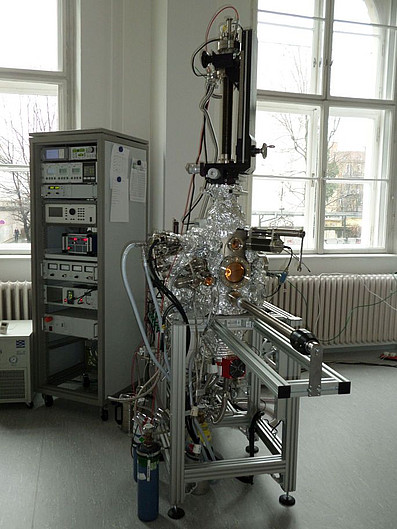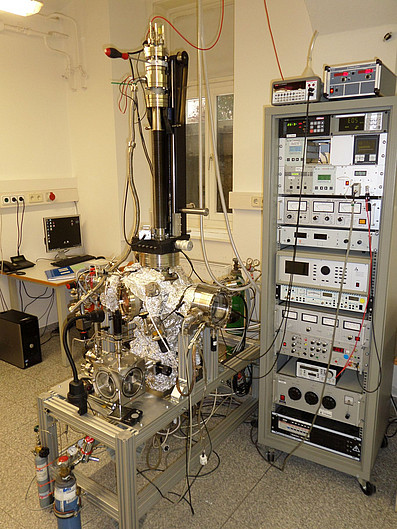Preparation chambers


To secure a better understanding of structure and bonding at oxide-liquid interfaces we employ well-known ultrahigh vacuum-based analytical methods such as low energy electron diffraction (LEED), temperature programmed desorption (TPD) and x-ray photoelectron spectroscopy (XPS) as a basis for our following investigations by solid-liquid in-situ scanning tunneling microscopy (STM) and sum-frequency generation (SFG) spectroscopy.
Therefore we work with three preparation chambers in our sense to be able to determine single crystalline oxide films as Fe3O4 and bilayer SiO2 with well-defined surface morphology and termination as well as homogeneous coverage or to check also the temperature stability of molecules on our surfaces in a preliminary investigation. Two of these chambers are equipped with only TPD and LEED, whereas one of them has an additional SPECS-XPS.